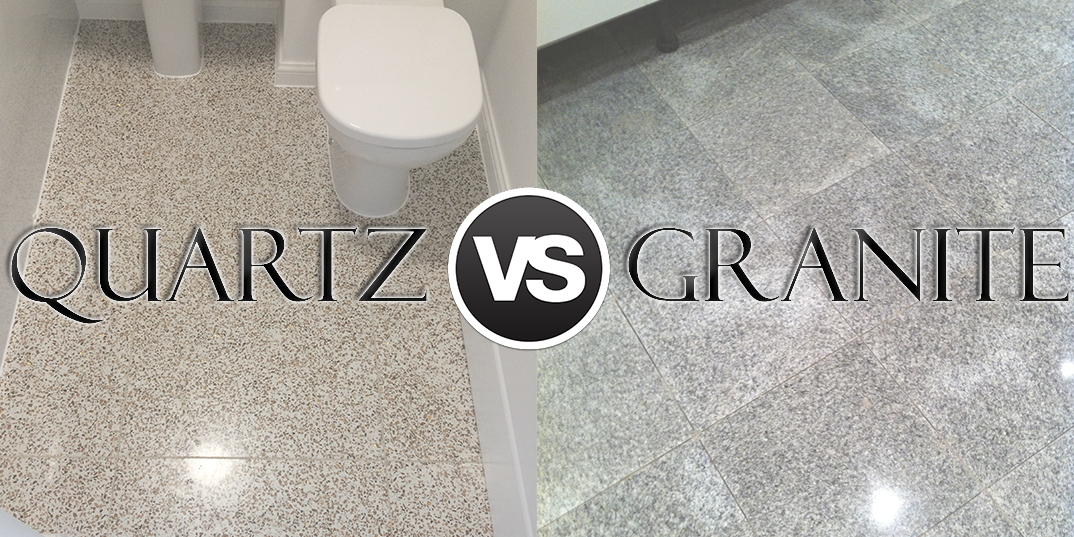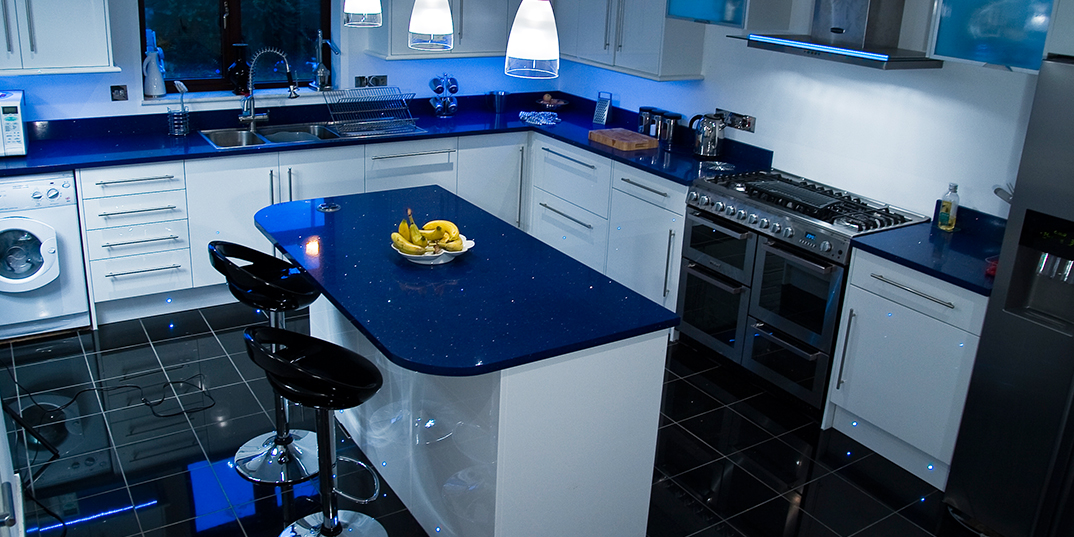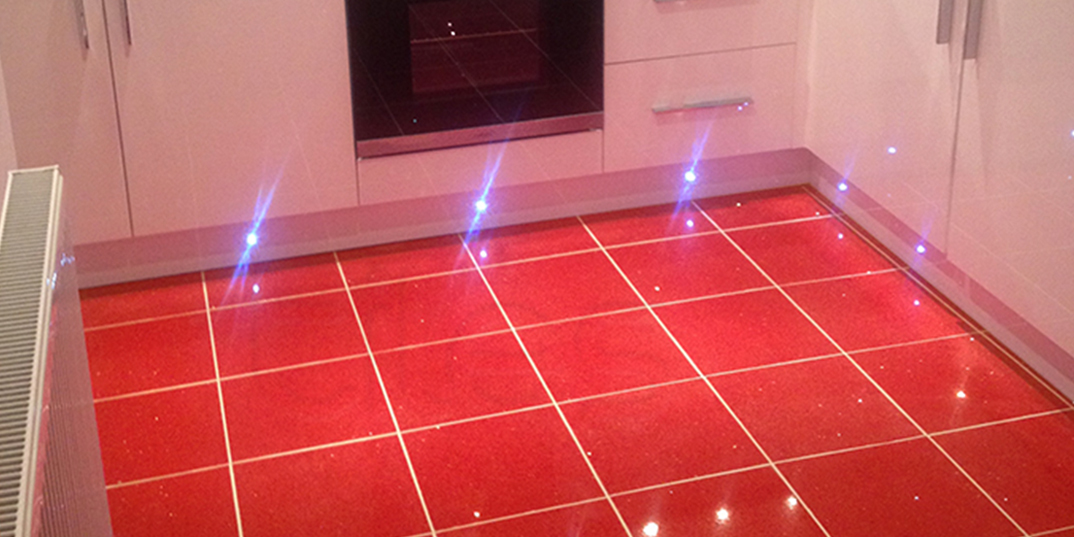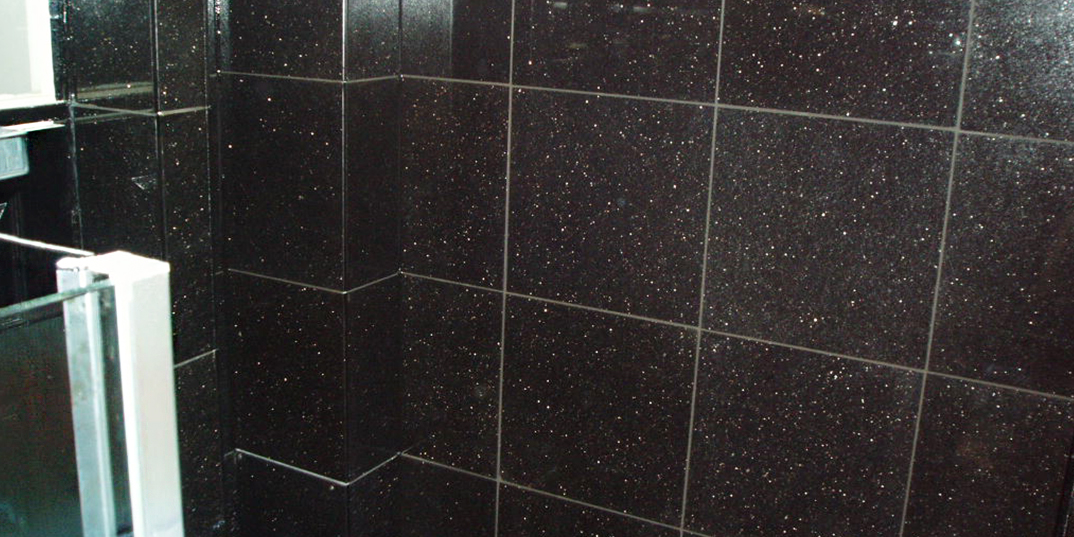Cookie
This website requires cookies to provide all of its features. For more information on what data is contained in the cookies, please see our Privacy Policy page. To accept cookies from this site, please click the Accept button below.


Quartz and granite are two popular tile varieties and for a range of different reasons they are often compared with each other. Despite the title, Quartz VS Granite, this is not a competition! They are both great tiles in their own right, this article is purely here to inform you of their various differences and dispel a few common misconceptions when it comes to quartz and granite.


The reason why the quartz VS granite debate arises in the first place is because people looking for a certain style within their home will invariably be left with these two tiles to choose from. They each have a distinctive appearance and similar qualities which can make them hard to tell apart at first glance. Quartz and Granite can both appear sparkly and are often seen in shops and hotels. This means the appearance of these tiles is already familiar to a lot of people before they even consider them for their kitchen or bathroom.
Quartz and granite are both universally recognised as an excellent material for kitchen countertops. Both also tend to be highly polished which is another reason they are regularly compared to each other. Furthermore, the popular varieties tend to be of the same colour, for example; midnight black quartz/Galaxy Granite Black and Diamond white quartz/Kashmir White Granite.
It is not just in appearance where these tiles are so alike but they also share the same practical qualities too. Both are very hard wearing and suitable for high traffic areas and are therefore regularly chosen for similar projects. In comparison to many other tile varieties they have also proven to be easy to clean and maintain. So that's the similarities over with, what about the differences?


First of all quartz and granite are entirely different materials. Quartz is a resin based, manufactured product. The sparkly appearance is created by the inclusion of reflective mirror flecks during the engineering process. Quartz tiles are a composite material which comprises of quartz, sand, resin, colour pigment and in most cases; mirror pieces. The quartz tiles at Tilesporcelain have a high Quartz content. The mirror flecks cover the surface of the tile, producing a glistening look. This is why you will often hear and read words like Crystalstone and Cosmos in relation to quartz tiles. Because the resins in quartz are highly compacted during the manufacturing process, these tiles have an almost impermeable surface. Quartz tiles are available in various colours including black, white, grey, cream, blue, red, brown, green and even pink!


In contrast to engineered quartz, granite is 100% natural. This igneous rock forms from liquid magma through a process called crystallisation. Unlike many other natural rocks which form in layers of sediment, granite starts life in liquid form. This makes it a highly compacted stone with a naturally low moisture absorption rate. The liquid magma makes its way from the earth’s continental crust to its surface, where it cools to create granite. As a result of this explosive creation granite is found in volcanic areas. The sparkly appearance, noticeable in certain varieties of granite, is a result of natural copper flecks. Granite colours include black, red, white and grey.

